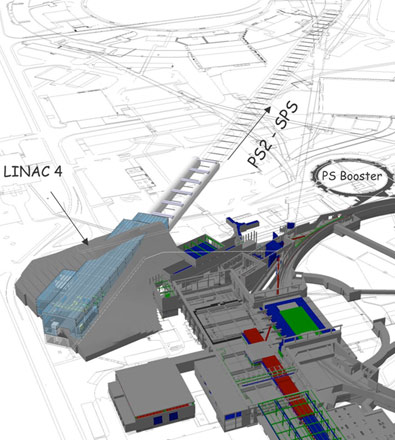Pushing the boundaries
On this site, you can read more about the changes that must be made to the LHC if the machine is to carry ten times as many protons in each beam.
Creating those stronger proton beams and then injecting them into the LHC will involve changes to the injector systems. Three new injectors will be added to the LHC: LINAC4, the Low-Power Super Proton Linac (LPSPL) and the new Proton Synchroton (PS2).
Within the LHC itself, new and more powerful magnets will be needed to control and focus the brighter proton beams as they speed around the detector ring. You can read about the the new focusing triplets, built using the latest superconducting technology.
The detectors will not escape the upgrade process. The two largest detectors at the LHC – ATLAS and CMS – will each undergo major upgrades in order to push up their sensitivity limits and make the best advantage of the higher collision rates occurring at their cores. Those changes will require new technology to power the upgraded detectors.
Finally, the new super-LHC must be robust enough to withstand a tenfold increase in radiation intensities - and the engineers working on the machine must be protected from radiation exposure.
An artistic impression of the new LINAC 4 facility (original image here).





